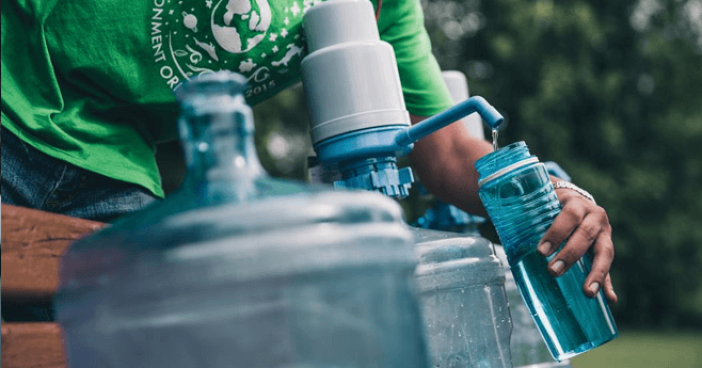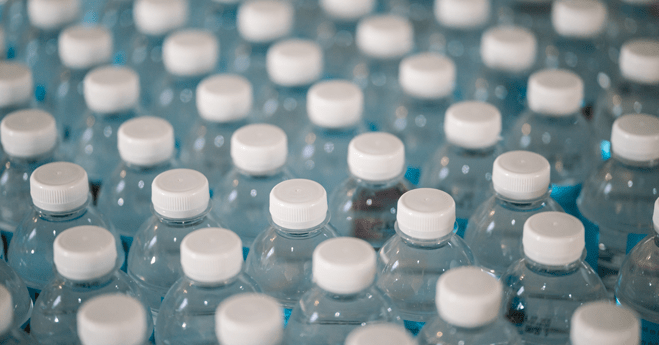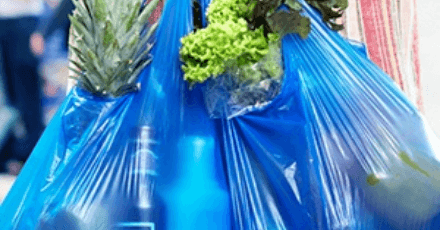 When the G7 Ministers of the Environment recently met in Halifax, Nova Scotia to specifically discuss the big problem of plastic garbage clogging our oceans around the world, it was mainly because scientists found that it finds its way into our own food chain. Plastics break down into small particles that look like food to fish. They ingest it and digest it, and they, in turn are eaten by us, or more importantly, our children. The ministers were told a plastic bag takes 500 years to break down, and the use of plastics is increasing, not decreasing, which means the problem will only get bigger if nothing is done.
When the G7 Ministers of the Environment recently met in Halifax, Nova Scotia to specifically discuss the big problem of plastic garbage clogging our oceans around the world, it was mainly because scientists found that it finds its way into our own food chain. Plastics break down into small particles that look like food to fish. They ingest it and digest it, and they, in turn are eaten by us, or more importantly, our children. The ministers were told a plastic bag takes 500 years to break down, and the use of plastics is increasing, not decreasing, which means the problem will only get bigger if nothing is done.
How can we, as individuals, reduce our own use of disposable plastics given that they have conveniently made our lives easier? I have dramatically reduced my own plastic consumption in the one area with the highest concentration of disposable plastics with little time, effort, or imposition on my daily life. That area is food.
Here are five easy changes that reduced my food-related plastic consumption. The hardest change for me was to be aware of where and how I was using plastic in order to change my habits and start looking for easy alternatives.
1. Eliminate plastic wrap
I have the same ten-year-old roll of 395 ft of plastic wrap in the drawer that has not been used since I started storing cut apples, onions, lemons, or any other similar item in the fridge by cutting them horizontally, and then putting the remainder cut-side down on a lid from a yogurt or kefir container. Larger items like watermelon work well on a melamine plate. Once I thought about it, it made sense to use the fruit or vegetable’s peel as a natural wrap. I discovered they kept longer this way and did not turn mushy like they did when wrapped with plastic wrap.
I also use re-usable plastic food storage containers for the fridge. Leftovers make a great quick meal, but I use a glass plate or bowl in the microwave because plastic breaks down when heated and is absorbed into the food.
2. Use my own reusable water bottle
Bottled water is a huge contributor to the plastics problem because it is readily accessible and is single-use. What I do is use my own water bottle. I bring my aluminum bottle for water or Chinese green tea. I have learned to first fill the bottle with about 30% cold water before pouring in the hot tea to prevent the bottle’s bottom from bulging out of shape from the heat.
Or, you can make your own reusable bottle by repurposing a glass bottled drink. Choose the size and shape (and drink) of the bottle that you like, and when finished, reuse a mesh sleeve that the liquor store puts on bottles to prevent breakage. This works well and is free.
If you do buy bottled water, aim to use packaging from companies such as Tetra Pak, which are not plastic and are recyclable.
3. Store food in mason, or glass jars
Glass is inert, which makes it the healthiest food container since it does not transfer unwanted chemicals into your food. Mason, or canning jars are versatile and can store dry or liquid foods. I store the jars upside-down so the contents are clearly visible, and there is a larger space gap. The only disadvantage is that mason jars are sold in a case of twelve.
Or, you can repurpose a food product sold in a glass jar, preferably not one with a strong odor like dill pickles. Buy a product you like in the size and shape of glass jar that you want. When finished, it is a perfectly good jar, but I use a coffee filter, basket size, to line the lid as an odor barrier and seal. I keep these jars upside down, too.
4. Buy food items from in-store dispensaries
Many grocery stores, like Whole Foods, have a dispensary section for grains, pulses, and other dry goods, and the cost is by weight. Once home, I transfer the items to my glass jars.
Grocery stores often have in-house bakery, butcher, fish, deli, and cheese dispensaries, as well as loose fresh vegetables and fruits sold by weight. Buying here, too, also eliminates a lot of plastic packaging.
5. Bring re-usable shopping bags
On September 15, 2018, volunteers from Greenpeace and other advocacy groups collected garbage from Canadian shorelines in Vancouver, Toronto, Montreal, and Halifax. They collected 10,000 kg (more than 22,000 lbs) of trash on that one day, 75% of which was plastic food wrappers, plastic bottles, plastic bags, and plastic-lined coffee cups. Brand labels were still visible.
For coffee, I drink it in a mug because it tastes better. I keep my re-usable shopping bags in my car so they are accessible, and if I forget to bring them with me to the store, I do not have far to go back to get them. Some stores post prompter signs before their entrances to remind their patrons to bring their own bags. It makes a huge difference. When the City of Toronto required stores to charge $0.05 per plastic bag, it bought a revolution. Plastic bag use dropped by around 90%.
Every day, and every meal, each and every one of us can choose to reduce the amount of plastic garbage we accept as consumers. These five changes in my own behavior made a difference in reducing my plastic consumption, and it opened up my awareness to other things I can do. It is not hard to do.
The views and opinions expressed in this article are solely those of the original author. These views and opinions do not necessarily represent those of ADEC Innovations, and/or any/all contributors to this site.
ADEC Innovations is a leading provider of ESG solutions, with expertise in delivering fully-integrated consulting, software, and data management services. Connect with us on Facebook, Twitter, and LinkedIn for the latest in sustainability around the world.
Looking for more ways to reduce your plastic waste and environmental impact in the home? Check out our previous post for tips on how to move towards becoming zero-waste.




